
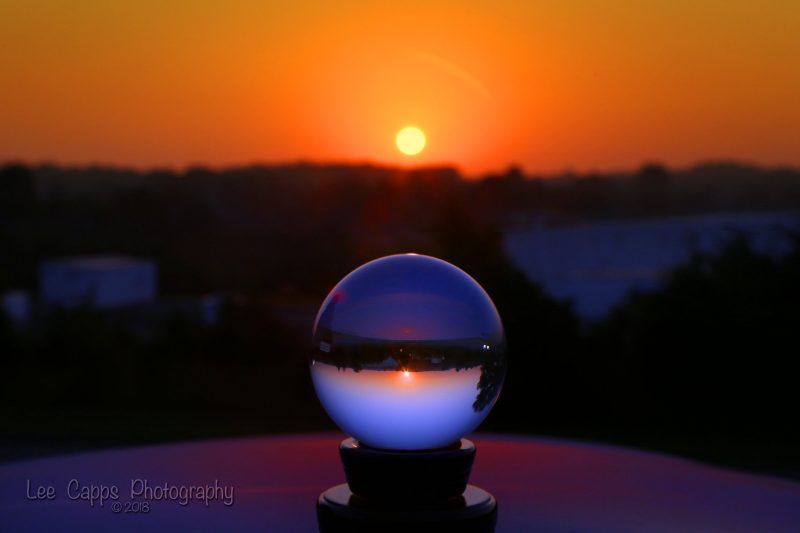
First sunrise of fall from central North Carolina – September 22, 2018 – via our friend Lee Capps.
The September equinox will arrive on September 23, 2019 at 07:50 UTC. Although the equinox happens at the same moment worldwide, your clock time will depend on your time zone. For time zones in the continental U.S., this equinox comes early in the morning on September 23 (3:50 a.m. EDT, 2:50 a.m. CDT, 1:50 a.m. MDT and 12:50 a.m. PDT). Translate UTC to your time zone.
At the equinox, days and nights will be approximately equal in length. For us in the Northern Hemisphere, the sun is rising later now, and nightfall comes sooner. We’re enjoying the cooler days of almost-autumn.
Meanwhile, south of the equator, spring is about to begin.
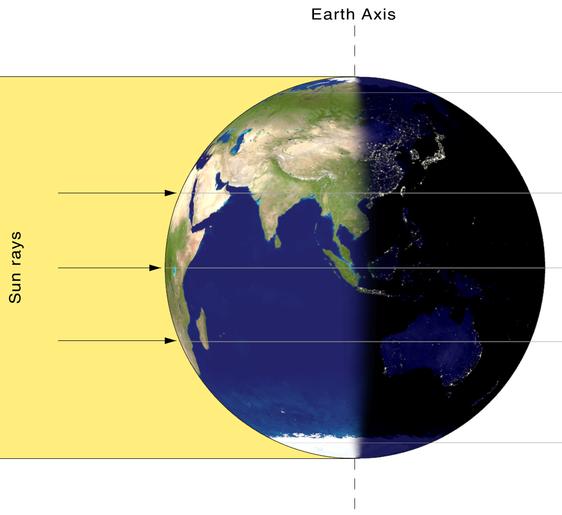
Around the time of an equinox, Earth’s Northern and Southern Hemispheres are receiving the sun’s rays as equally as they can. Image via Wikipedia.
What is an equinox? The earliest humans spent more time outside than we do. They used the sky as both a clock and a calendar. They could easily see that the sun’s path across the sky, the length of daylight, and the location of the sunrise and sunset all shift in a regular way throughout the year.
Our ancestors built the first observatories to track the sun’s progress. One example is at Machu Picchu in Peru, where the Intihuatana stone, shown below, has been shown to be a precise indicator of the date of the two equinoxes and other significant celestial periods. The word Intihuatana, by the way, literally means for tying the sun.
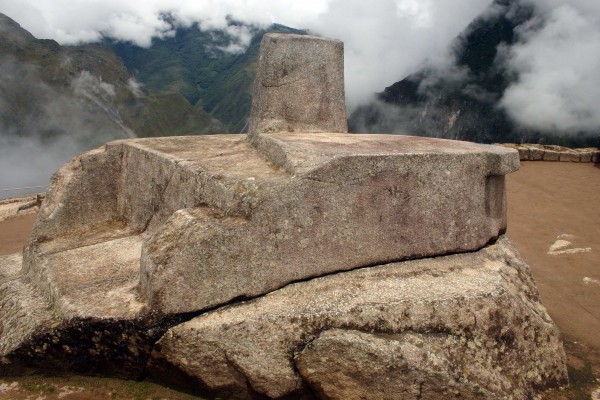
The Intihuatana stone – also called the Hitching Post of the Sun – at Machu Picchu in Peru. It was used to track the sun throughout the year. Photo via Imagesofanthropology.com.
Today, we know each equinox and solstice is an astronomical event, caused by Earth’s tilt on its axis and ceaseless orbit around the sun.
Because Earth doesn’t orbit upright, but is instead tilted on its axis by 23 1/2 degrees, Earth’s Northern and Southern Hemispheres trade places throughout the year in receiving the sun’s light and warmth most directly.
We have an equinox twice a year – spring and fall – when the tilt of the Earth’s axis and Earth’s orbit around the sun combine in such a way that the axis is inclined neither away from nor toward the sun.
Earth’s two hemispheres are receiving the sun’s rays about equally around equinox-time. The sun is overhead at noon as seen from the equator. Night and day are approximately equal in length.
The name equinox comes from the Latin aequus (equal) and nox (night).
Of course, Earth never stops moving around the sun. So these days of approximately equal sunlight and night will change quickly.

Autumn in Sweden via EarthSky Facebook friend Jörgen Norrland Andersson.
Where should I look to see signs of the equinox in nature? The knowledge that summer is gone – and winter is coming – is everywhere now, on the northern half of Earth’s globe.
If you live in the Northern Hemisphere, you can easily notice the later dawns and earlier sunsets.
Also notice the arc of the sun across the sky each day. You’ll find it’s shifting toward the south. Birds and butterflies are migrating southward, too, along with the path of the sun.
The shorter days are bringing cooler weather. A chill is in the air. In New York City and other fashionable places, some people have stopped wearing white. Creatures of the wild are putting on their winter coats.
All around us, trees and plants are ending this year’s cycle of growth. Perhaps they are responding with glorious autumn leaves, or a last burst of bloom before winter comes.
In the night sky, Fomalhaut – the Autumn Star – is making its way across the heavens each night.
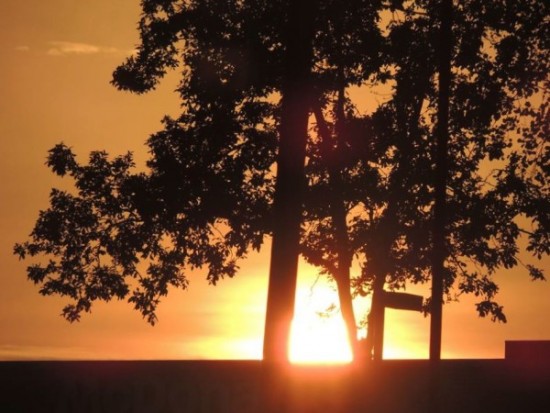
A first sunrise of autumn by EarthSky Facebook friend Mary C. Cox in North Carolina.
Does the sun rise due east and set due west at the equinox? Generally speaking, yes, it does. And that’s true no matter where you live on Earth, because we all see the same sky.
Everywhere on Earth, except at the North and South Poles, you have a due east and due west point on your horizon. That point marks the intersection of your horizon with the celestial equator – the imaginary line above the true equator of the Earth.
At the equinoxes, the sun appears overhead at noon as seen from Earth’s equator, as the illustration below shows.
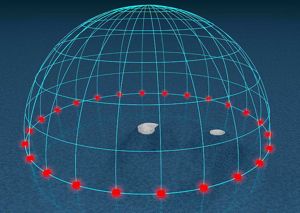
Illustration of the sun’s location on the celestial equator, every hour, on the day of an equinox, via Tau’olunga/Wikimedia Commons.
That’s why the sun rises due east and sets due west for all of us. The sun is on the celestial equator, and the celestial equator intersects all of our horizons at points due east and due west.
This fact makes the day of an equinox a good day for finding due east and due west from your yard or other favorite site for watching the sky. Just go outside around sunset or sunrise and notice the location of the sun on the horizon with respect to familiar landmarks.
If you do this, you’ll be able to use those landmarks to find those cardinal directions in the weeks and months ahead, long after Earth has moved on in its orbit around the sun, carrying the sunrise and sunset points southward.
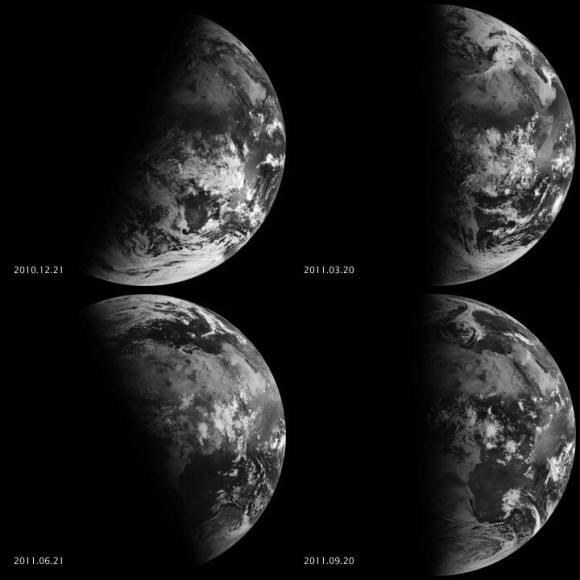
Equinoxes and solstices. In each of the images, Earth’s rotational axis is perpendicular (straight up and down), with the North Pole at top and South Pole at bottom. Earth at the equinoxes shown at right; Earth at solstices shown at left. Images via Geosync.
Bottom line: Enjoy the 2019 equinox – a seasonal signpost in Earth’s orbit around the sun!
Why aren’t day and night exactly equal on the equinox?
Year’s fastest sunsets at equinox
Sun over Earth’s equator at equinox
Source:
https://earthsky.org/astronomy-essentials/everything-you-need-to-know-september-equinox